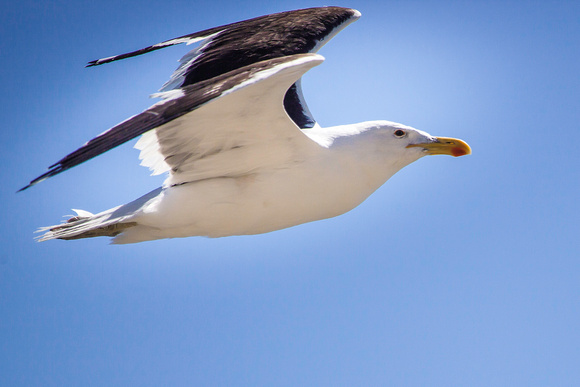Cape Gull (Larus dominicanus vetula)
Cape Gull or Southern Black Backed Gull (Larus dominicanus vetula)
24 inches long.
Breeds on coasts and islands through much of the southern hemisphere. Cape gull is a subspecies of Southern Black Backed Gull that has dark eye and white tail, rather than the light eye and black tail.
Omnivores, and they will scavenge as well as seeking suitable small prey. It gathers on landfills and a sharp increase in its population is therefore considered as an indicator for a degraded environment. They have been observed feeding on live right whales since at least 1996. The cape gull uses its powerful beak to peck down centimetres into the skin and blubber, often leaving the whales with large open sores, some of which have been observed to be half a meter in diameter. This predatory behavior has been continually documented in Argentinian waters, and continues today. At rocky sites along the southern African coast, such as at Boulders Beach in Cape Town, can be seen picking up shellfish and repeatedly flying up several meters and dropping them onto the rocks below in order to break them open.
The nest is a shallow depression on the ground lined with vegetation and feathers. Nest colonially. The female usually lays 2 or 3 eggs. Both parents feed the young birds.


